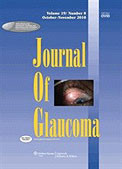Filouš A, Hložánek M, Hladíková M. J Glaucoma. 2010 Sep;19(7):450–5. IF: 2.078

Abstract:
PURPOSE: To investigate the occurrence and features of the atypical birefringence pattern (ABP) images in scanning laser polarimetry with variable corneal compensation (GD × VCC) in healthy children and to assess their impact on the values of the retinal nerve fiber layer (RNFL) thickness. METHODS: GD × VCC scans in 120 healthy white school-aged children with mean age ± standard deviation (SD) 12.85 ± 3.0 years were evaluated using typical scan score (TSS) calculation and by subjective grading of the scans. Statistical analysis including the impact of ABP on the RNFL thickness in GD × VCC Temporal-Superior-Nasal-Inferior-Temporal (TSNIT) parameters was done. RESULTS: The ABP was found in 18 out of 120 patients (15 %) at cut-off value of TSS < 80. Subjective evaluation of the scans raised the frequency of ABP to 20 % of patients. The mean ± SD values of TSNIT Average, Superior Average, and Inferior Average in 26 eyes with ABP versus 214 eyes with normal birefringence pattern were 66.99 ± 7.29 μm versus 58.00 ± 6.22 μm (P = 7.2 E to –11), 78.43 ± 9.27 μm versus 72.33 ± 8.72 μm (P = 0.001) and 80.87 ± 12.01 μm versus 70.00 ± 10.20 μm (P = 0.000001), respectively. The same comparison in TSNIT SD showed minimal difference and was 25.42 ± 5.84 μm versus 26.41 ± 4.81 μm (P = 0.41). CONCLUSIONS: The occurrence of ABP in children is not rare and may significantly distort the measured values of the RNFL thickness in TSNIT parameters using GD × VCC.
-az-